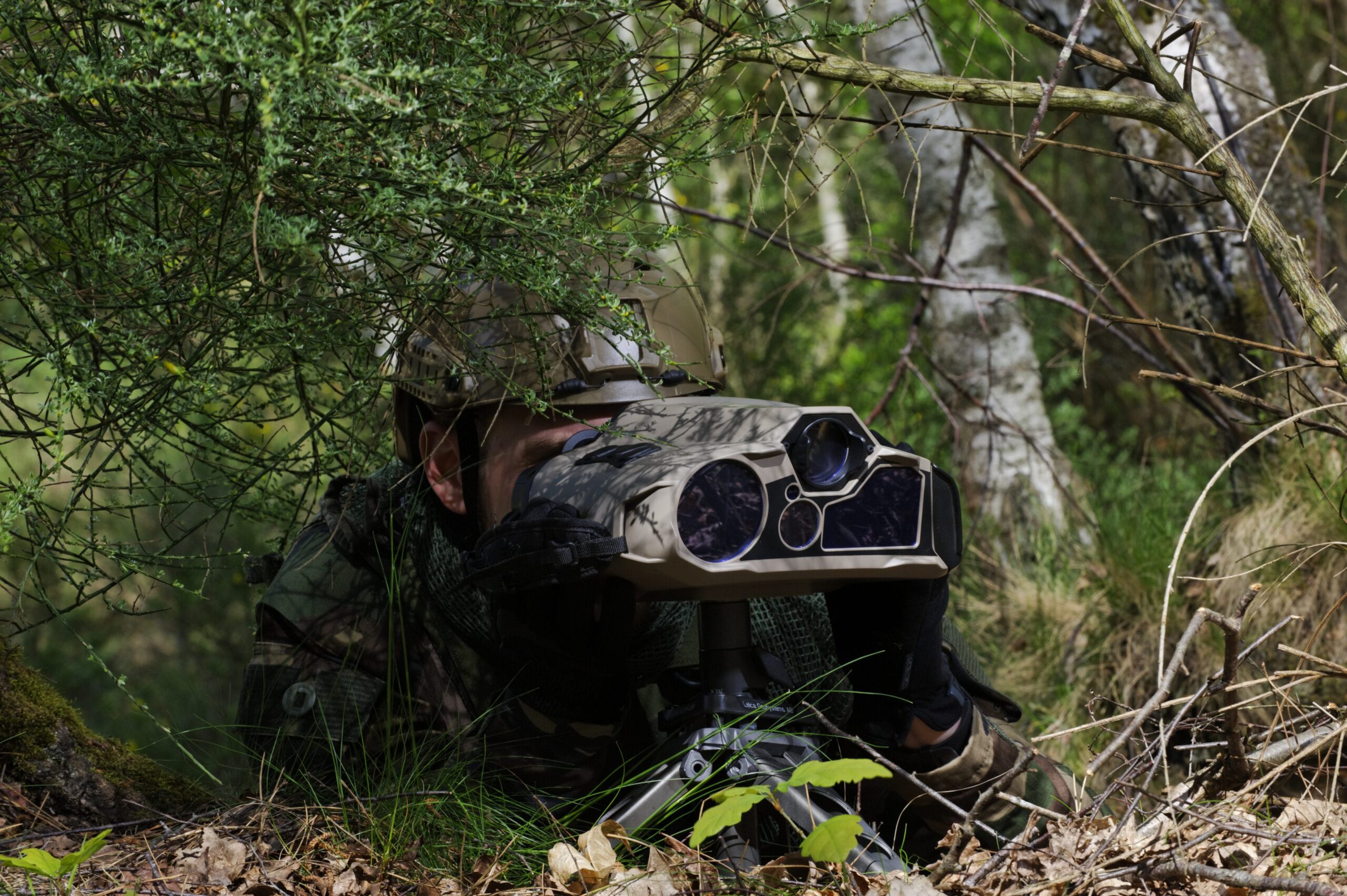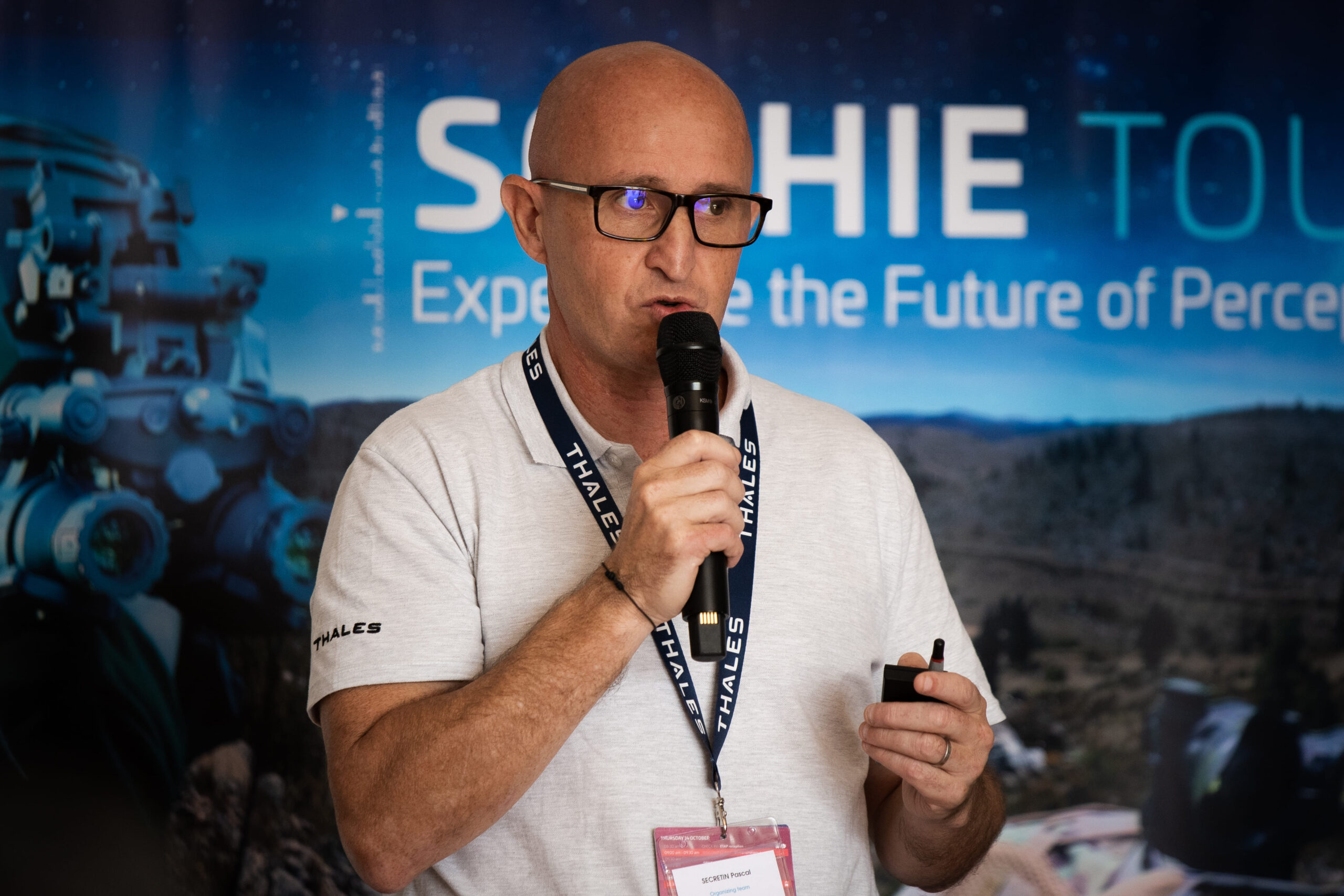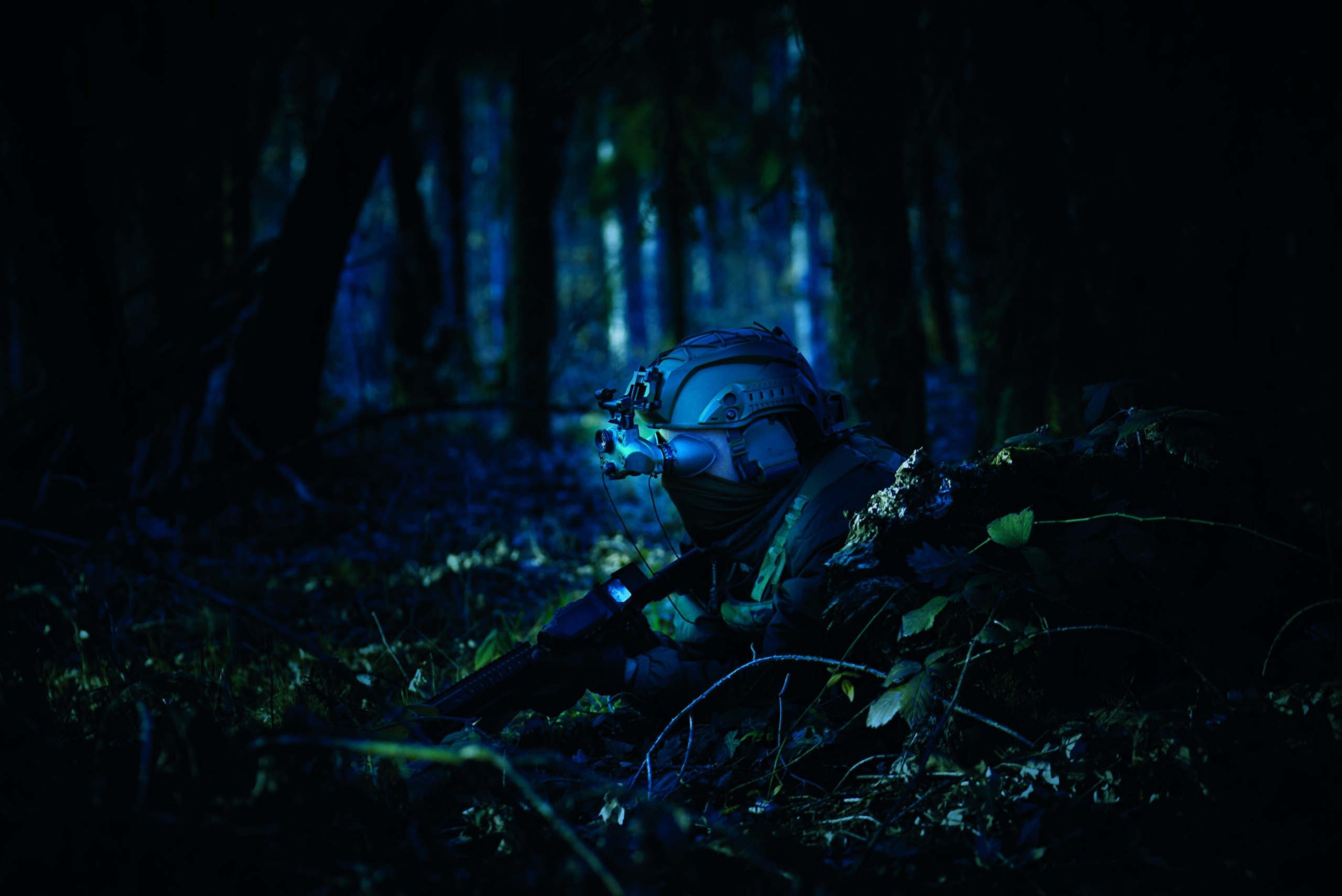Anthony Guesnier, CMI manager for Thales’s optronics business has navigated the military and engineering worlds for over three decades. We asked him to share his operational experience and technical insights to explain how advances in the field of night vision are having a profound impact on contemporary military operations.
Can you tell us about your background?
I’ve been CMI manager for Thales’s optronics business for the last two years. Before that, I served as an officer in the French Army for 27 years, starting out in ground-to-ground artillery, first in the parachute artillery regiment, then in armoured artillery. I then went on to study mechanical engineering and spent 10 years with the Army’s technical section (STAT), where I was a liaison officer and headed the optronics group, with responsibility for portable optronics and vehicle optronics.
Why is night vision so important in military operations?
The night vision capability comprises two types of equipment – night vision goggles (NVGs) and thermal imaging cameras. Night vision goggles are used at night, obviously, but also during the day in lightless buildings, for target detection, classification and identification. They can also play a crucial role in firing weapons, driving vehicles and flying helicopters and fixed-wing aircraft.
Thermal cameras, or “multi-function cameras”, combine a day channel, a thermal channel, a GPS to determine your position, and a magnetic compass to know which direction you’re looking in. Some models also include a laser rangefinder to measure the distance between what you’re looking at and your position. All these functions are combined to provide target coordinates with varying degrees of precision, depending on equipment specifications. In addition, some thermal imaging cameras have a laser pointer that can be used to show a target to someone equipped with night vision goggles. Today, they are mainly used by infantry units (section/group leaders), cavalry units, artillery units, intelligence units (observation) and specialised units (parachute commando group/mountain commando group).
How have advances in night vision influenced field operations in recent years?
It’s been a revolution. In my early days with the artillery, when we were on observation teams and calling in shots, to be able to work at night, you had to arrive at the position during the day and spot the observation sector in daylight. And at night, you had to hope for a bit of starlight or a bit of moonlight to see anything. To be honest, we listened more than we observed. So the arrival of night vision goggles allowed us to move around, and the arrival of thermal cameras allowed us to observe at night. This gave us greater flexibility, because we could arrive, set up, work and leave, all in the dark. That new capability gave us a technological edge over our opponents, who couldn’t see at night. This change in field operations occurred in the first 15 years of the 21st century in Afghanistan, the Balkans and Africa.
But the first night vision binoculars (OB 64 – UGO) were bulky and heavy and gave you severe neck strain – if you wore them all night, you couldn’t move your head the next day. And in those early days, you really couldn’t see much if there wasn’t much light.
How has the use of thermal imaging cameras changed the way night operations are conducted?
The French Army’s first thermal imaging cameras were the SOPHIE and then the SOPHIE LR (single function). They enabled us to be more flexible and responsive, and to really work at night. They gave infantry units a real night firing capability by directing their fire and observing what was happening in front of them more effectively. If you can see the enemy coming, you can anticipate what’s going to happen, give orders and better direct your fire. This wasn’t necessarily the case before, as you had to fire illuminating ammunition to achieve the same level of effectiveness. But this wasn’t very discreet, so the element of surprise was lost.
For heavy vehicles, such as the VAB wheeled armoured vehicle, there was a thermal camera called a CASTOR. It was positioned on a turret and the image was displayed on a 10 x 10 cm screen. It enabled us to see at night at quite long range.
These revolutionary new capabilities changed the organisation of field operations in general. The infantry system that followed provided cameras at all echelons, and the innovation soon became an essential requirement.
If you’d had a SOPHIE ULTIMA, how could it have helped you to succeed in your missions?
I wish I’d had the Sophie Ultima when I was a parachutist! There weren’t many of the first SOPHIE cameras available. We only had daytime optics (Vector type at best) and a radio. The Sophie Ultima would have given us greater range, enabling us to work at night as well as during the day. Today, artillery teams are equipped with JIM LRs, so switching to the Sophie Ultima could increase their range capability while significantly reducing weight.

What do you see as the most important capability for a thermal camera?
A thermal camera must be able to see by day and by night, and extract coordinates regardless of climate, location or altitude. But for many users (infantry, cavalry, JTACs, etc.), other functionalities are also essential. They need to be able to operate in GNSS-denied environments to determine a position without a GPS signal, and they should deliver the performance needed for extraction of coordinates with TLE1 accuracy (positioning error less than 6 metres) on targets at a distance of over 2 km.
This is what Thales offers with Visioloc. This function, integrated into the Sophie Ultima, combines a GNSS-denied positioning capability with high precision, low weight and robustness in dense electromagnetic environments.
What do you think tomorrow’s challenge will be?
Collaborative combat. It’s great to be able to detect, locate and capture images of the enemy, but it’s even better to be able to transmit and disseminate that information immediately. Today’s warfighting operations revolve around the secure transmission of information and the ability to defeat all existing jamming systems. And in the age of collaborative combat, these capabilities will be even more critical.



Leave a Reply